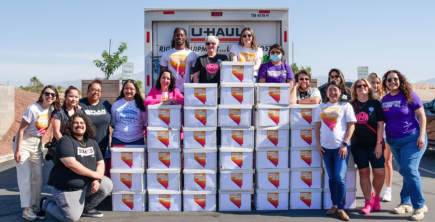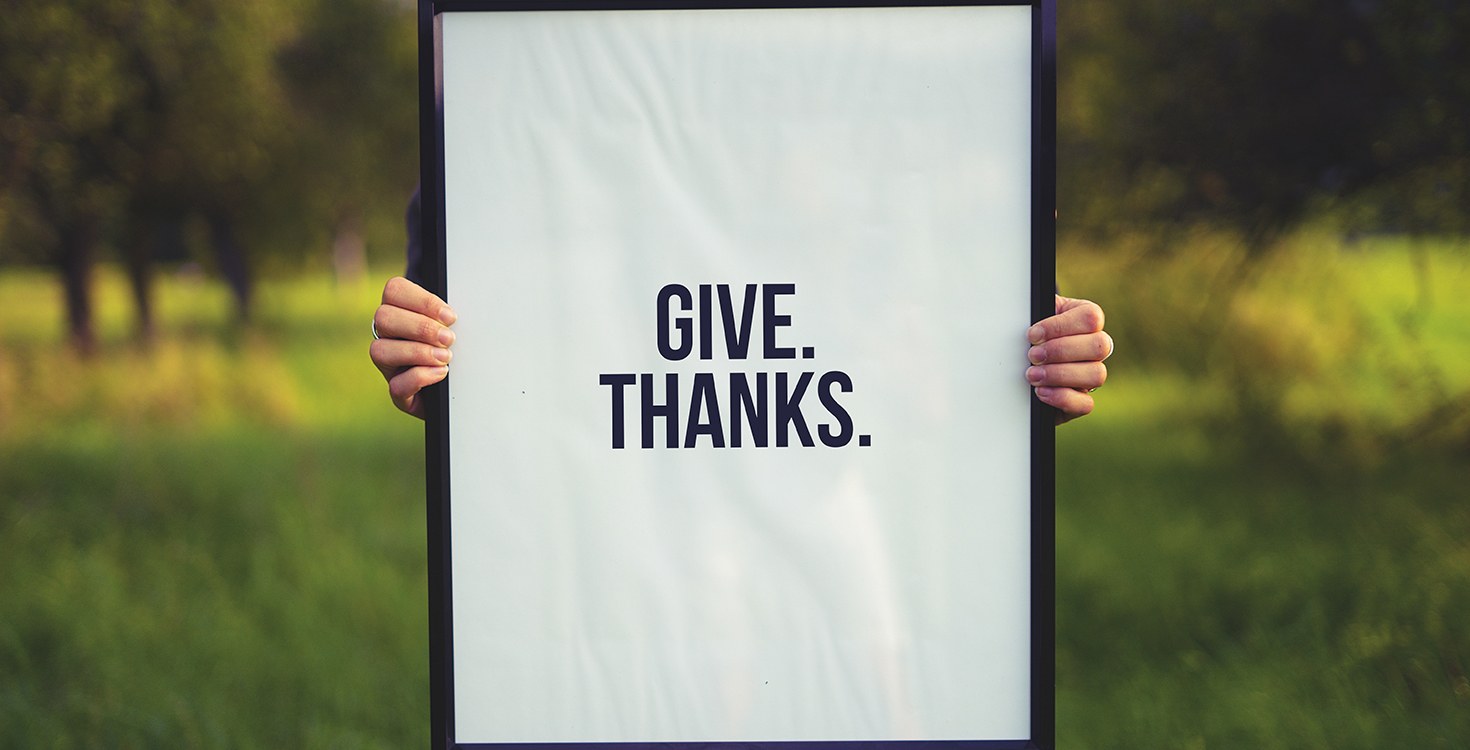
Our Community

With the giving season upon us, individual donor fundraising is particularly top of mind for many nonprofits. However, starting or jump-starting your organization’s fundraising efforts can be challenging and overwhelming, and it’s hard to know where to start. To support those nonprofits looking to cultivate donors, we launched a content series earlier this fall called Finishing Off Strong: Empowering Nonprofits to Inspire Year-End Giving. In this next installment, we spoke with several fiscally sponsored projects practicing successful strategies to learn how they engage with donors to not only raise funds, but to build and strengthen their supporter community.
In this overview, we share insights from those conversations and recommendations drawn from our experience working with our partners over the years. Whether your organization is just starting its fundraising journey, or needs to refresh its current strategy, read on for inspiration and insight to help you meet your fundraising goals.
Engaging with donors is not only about the dollars they contribute, but equally about the role of those donors as advocates for your organization.
To inform this piece, we spoke with leaders from Community justice Exchange, Nobody Leaves Mid-Hudson, and Palestine Legal, which have each been successful meaningfully connecting with donors to hit fundraising targets. Although these three organizations differ in many ways, they are united by their fundraising philosophy: engaging with donors is not only about the dollars they contribute, but equally about the role of those donors as advocates for your organization.
Who they are: Community Justice Exchange (CJE) is a national hub for developing and sharing innovative tools, interventions, and organizing practices to end mass incarceration. CJE supports community-based organizations working towards a new vision of community justice through bottom-up interventions in the criminal legal and immigration detention systems.
Recent success: In 2019, CJE coordinated two online campaigns to raise over $600,000 for CJE’s National Bail Fund Network initiative, which supports posting bond for individuals in immigration detention.
Who they are: Nobody Leaves Mid-Hudson (NLMH) is a fiscally sponsored project of Tides Advocacy, Tides’ affiliated 501c4. NLMH is committed to empowering local communities through community organizing, civic engagement, and leadership development in the Hudson River Region in New York State.
Recent success: In 2019, NLMH’s individual donor program is on track to secure 7,000 donations at an average of $50 per donation, which is enough revenue to fund half of their annual operating budget.
Who they are: Palestine Legal is an independent organization dedicated to protecting the civil and constitutional rights of people in the U.S. who speak out for Palestinian freedom through providing legal advice, Know Your Rights trainings, advocacy, and litigation support to activists and affected communities who stand for justice in Palestine.
Recent success: Palestine Legal has been able to grow their donor base from about 50 individual donors to over 1,000 individuals in just 5 years.
Not only is every person in your social network a potential donor, they are potential fundraising volunteers, coordinators and allies.
Takeaway #1: Tap into your social network—not just social media—to help you fundraise.
As you begin generating ideas for fundraising events and campaigns, consider this as a moment for relationship building. Your friends and colleagues in your social network are people who have the skills, interests, passions, and motivations to get involved in your work. Not only is every person in your social network a potential donor, they are potential fundraising volunteers, coordinators and allies.
The magic of Nobody Leaves Mid-Hudson is that they recruit hundreds of fundraising volunteers to ask their network of potential donors to contribute to the organization. Volunteers play a significant role in thanking donors, writing thank you notes, and crowdsourcing names of other potential donors. Staff provide trainings and materials to prepare volunteers to make the ask.
Palestine Legal also taps into their social network to host house parties to benefit the organization. They begin with identifying a willing supporter to host the event. They then form a host committee, which is responsible for helping to generate a guest list, and will often secure the food and beverages. During the event, the host educates guests about the organization and solicits donations for Palestine Legal. Palestine Legal provides logistical support, such as invitation tools and event programs, and coordinates communication with the host and host committee and ensure that the necessary tools are in place to make it easy for donors to give. These events generate between $8,000 and $10,000 each.
Take Action:
The technology is out there to make data collection easy—it’s just a matter of finding the right tools for your staff.
Takeaway #2: Harness the power of data and technology.
Data is powerful, especially when it comes to donor cultivation and management. The technology is out there to make data collection easy—it’s just a matter of finding the right tools for your staff. Angela Rashid-Campion, Development and Operations Manager from Palestine Legal highlights how the organization utilizes Salesforce for donor management, which allows staff to input their notes from their conversations with donors to track a donor’s particular interests and communication preferences. This data helps Palestine Legal build a relationship between donors and staff members, and provides insight on how to personalize communications with particular donors.
To hep them be efficient in their work, Palestine Legal chose a fundraising platform that integrates with Salesforce (in their case, Click and Pledge), so that they can focus their energy on reaching out to donors rather than on transferring data between two platforms.
Take Action:
Taking an iterative approach to individual fundraising programs creates opportunities to get to know donor preferences and what they find most compelling about your work.
Takeaway #3: Don’t be afraid to try something different.
Try viewing your individual fundraising as an opportunity to learn about what works for your community of donors and for your team. We heard this loud and clear from Nobody Leaves Mid Hudson Executive Director Jonathan Bix: “We did this [grassroots fundraising] model pretty poorly in a lot of ways at the beginning. We learned how to do it better every time. If you’re interested in doing something, just start, and you’ll learn something every time you do it.”
Angela at Palestine Legal echoed this strategy: Palestine Legal sends out mailings to donors that aren’t necessarily connected to a planned campaign, such as sharing a news article where the organization’s work is highlighted. Some donors respond with a gift; others don’t respond at all. For Giving Tuesday in 2018, the staff made “Gratitude Calls” rather than solicitation calls, and donors responded well overall. Experiments like these have added an additional relationship touchpoint between donors and the organization.
Asking for donations can also be a time for trying new strategies. Rather than soliciting funds during the traditional times of year, CJE partnered with community leaders to launch a fundraising appeal linking the July 4th holiday and the harsh reality that many migrants are suffering in prison camps. Their Freedom Summer 2019 campaign linked the idea of celebrating freedom with raising funds to support local bond funds.
Taking an iterative approach to individual fundraising programs creates opportunities to get to know donor preferences and what they find most compelling about your work.
Take Action
Throughout the conversations we had with these groups, the strongest takeaway we heard is that fundraising is a conscious process of building a community of donors who are invested in the success of your work, both financially and otherwise. Each of them values their donors as members of their movement; they treat them as activists whose method of participating is through financial support. We hope that this perspective and the insights above help spark new ideas to help your organization with end-of-year fundraising to finish off 2019 strong.
Photo by Simon Maage.

Our Community

Crisis Response Fund

Crisis Response Fund

Read the stories and hear the voices of social change leaders fighting for justice.